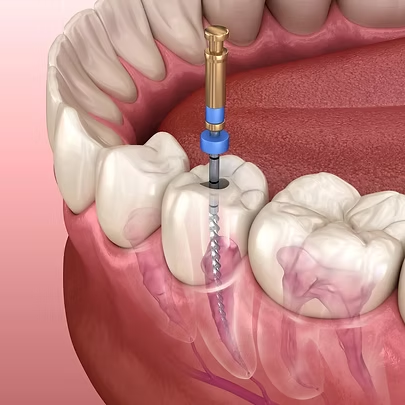Endodontics
What is endodontics?
Endodontics deals with the prevention of dental infections, their healing and the regeneration of the bone lost around the tooth as a consequence of dental pathology. Endodontic treatments are procedures that treat the inside of the tooth, where the dental pulp is located. The pulp contains blood vessels, nerves and connective tissue that nourish the tooth.
When is a root canal needed?
Endodontic treatment is necessary when the dental pulp becomes inflamed or infected. This can occur for several reasons: deep caries, trauma, tooth fractures and other pathological processes. Treatment may also be advisable
endodontics in teeth that require grinding for the subsequent placement of crowns or fixed bridges. Signs of a damaged pulp include: pain, prolonged sensitivity to cold or heat, color changes, and swelling, presence of fistulas that ooze, abscesses and discomfort in the gums around the tooth.

First, a clinical and radiographic examination is performed. Local anesthesia is then administered. A rubber dam is then placed to keep the tooth isolated, clean and free of saliva during the procedure. Next, an opening is made in the crown of the tooth to access the canals where the pulp is located. Instruments and a disinfectant irrigating solution are used to clean the pulp of the root canals. These canals are then filled with a biocompatible material, usually gutta-percha with a cement, to ensure a complete seal of the canals. Finally, a temporary or definitive restoration (“filling”) of the opening is placed.
In posterior teeth (premolars and molars), it may be convenient to protect the crown of the tooth (the visible part, which protrudes from the gum) with metal-porcelain caps, for greater durability.
